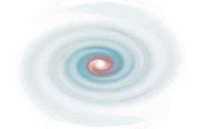


Since 1994
History of Hypnosis
How it all started.
The early history of hypnosis relates back thousands of years to the tribal rhythms and chants of our ancients from many regions. The primitive (or are they?) methods may still be seen today in some music, religions, organisations and indoctrinations by suggestion. Modern hypnotism is now a much studied and documented science, that undergoes continuous refinement of the methods and applications.
The modern method of hypnotism begins after Friedreich (Franz) Anton Mesmer (1734-1815) watched a street magician performing with lodestones (magnets). The magician declared that he was able to have a spectator do his bidding simply by touching them with the stone. The spectators actually did so. Mesmer deduced that the magnets held an important power, and so devised a method of healing based on the belief that illness was caused by the lack or faulty alignment of an ethereal magnetic substance. This substance emanated from heaven and could be corrected by him through the correct application of his method of "animal magnetism". Mesmer employed a number of methods, including touching a tree with a so-called magnetic rod and declared the tree magnetised, stating all who touched the tree would be cured of their ills. When Benjamin Franklin was in France, he observed a demonstration and declared that, "If these people get well at all, they seem to get well by their own imagination". Franklin was dead right, as it was the power of suggestion at work.
The medical profession complained to the King, who in 1784 appointed a Commission to investigate the "mesmerism". They declared "animal magnetism" to be fictitious, and that the success was due to the effects of suggestion on the patient's imagination. The practise was banned and Mesmer returned home in disgrace.
Some time later, James Esdaile (1808/1859), a Scottish surgeon living in India, found that the application of a varied form of mesmerism during surgery had the effect of diminishing bleeding and erasing pain and shock. This resulted in the reduction of the surgical mortality rate from 50% to 5%. During this time, he performed several thousand operations, including seventeen limb amputations. This was unequaled until Josef Lister began using antiseptic methods in 1863. James Braid (1795-1860), an English surgeon, rejected animal magnetism, while recognising the possible therapeutic benefits of trance. He believed it to be a form of nervous sleep and called his method neuro-hypnotism. The name was later shortened to "Hypnotism". Braid saw that the verbal suggestions induce a trance, and also greatly increase suggestibility.
Hypnosis became widespread throughout Europe from approximately 1880 to 1910, and fell into disuse. It has been conjectured that this was due to the authoritative method employed at the time which did not allow the patient's decisions to be valued, as compared to the present techniques of today.
Josef Breuer, Freud, Carl Jung and Ferenczi also did some work in hypnosis, but did not find the technique of the time altogether useful. Freud in particular was rather poor at hypnosis, lacking the confidence and rapport required, and an unfortunate preoccupation with sexual causes, and the resulting line of questioning.
World War Two saw a revival of hypnosis as a treatment of war neuroses at the front line, but there was very few capable of practicing. After WWII, it was widely used amongst dentists, but gave way to short acting inhalation anaesthetics.
The modern method of hypnosis is greatly based upon the work of Milton Erickson (1901/1980). In 1923 as a student majoring in psychology under Professor Clark Hull at the University of Wisconsin, he became interested and then pioneered a new style of hypnosis as used by many hypnotherapists.


(No watches are actually used. This is just living up to some expectations)
by Phil Smith
Ba. App. Sci.
A.D.M.E.
Justice of the Peace (Qual.)
Practitioner of Hypnosis and N.L.P.
By Appointment Only
At-Home Service Available
57 Brisbane Rd., Ebbw Vale, Qld. 4304 Australia
(Directly opposite the Freedom Fuels Garage.)

Appointments :- Ph. 0402 42 1997
Serving Ipswich and Bundaberg since 1994
Disclaimer : All of the information contained within this web site is to be considered the opinions of Phil Smith.
I will not be held responsible for misuse or abuse by any other parties, whether they are known or unknown to me. Hypnosis can be misused and abused, so USER BEWARE !

